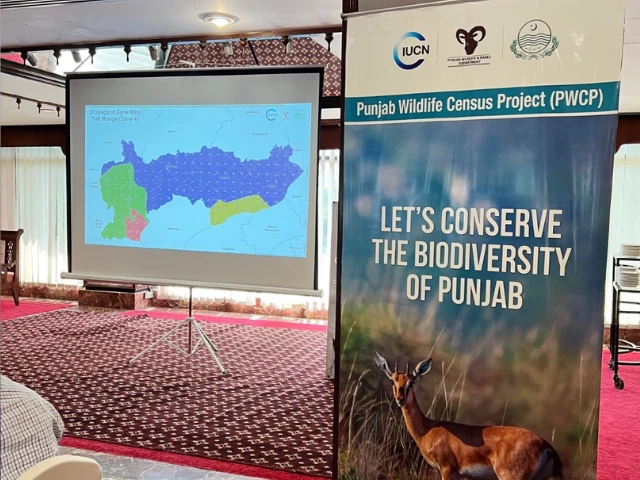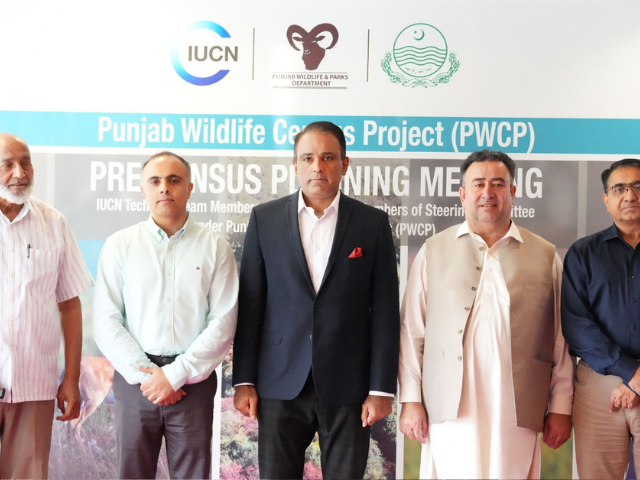Punjab biodiversity census widens into full scale botanical study
Earlier limited to reptiles and amphibians, survey now includes flora amid 500 species at risk

The next phase of full-scale botanical survey under the Punjab Wildlife Survey Scheme has officially begun after completing ts province-wide survey of reptiles and amphibians.
The decision was finalized during a consultative meeting in Lahore, attended by Punjab Wildlife Rangers, officials of the Forest Department, experts from the International Union for Conservation of Nature (IUCN), and faculty from various universities.
Participants agreed on the methodology, timeframe, and use of modern technologies for the botanical census.This initiative is the first internationally standardized biodiversity assessment in the province.
The scheme, launched in mid-2024 with fieldwork starting in January 2025, seeks to build a unified database of Punjab biodiversity, addressing the gaps.
The survey is primarily focused on native species including urial, chinkara, nilgai, hog deer, Indus dolphin, pangolin, and houbara bustard, though other plant and animal species are also being systematically recorded, explained Project Head Mudassir Hassan.
A steering committee has been established to monitor the project. The survey teams comprise biologists, university faculty and students, community representatives, volunteers, and NGO partners, equipped with tools such as camera traps, drones, and GPS mapping devices.
According to national project manager, Asim Jamal, Punjab may be the only province in the region conducting such a systematic biodiversity assessment. The findings will contribute to the development of a provincial Red Data Book and feed into global Red Data Book.
The IUCN Red List is a key measure of global biodiversity health, serving not just as a record of species status but as a tool to drive conservation efforts and policy changes vital for protecting natural resources.
Experts estimate that Punjab is home to more than 500 species, many of them threatened or endangered. These include the critically endangered Indus dolphin and Indian pangolin, the vulnerable houbara bustard, urial, and chinkara, as well as vultures such as the white-rumped and long-billed, which are on the verge of local extinction in Pakistan.

Photo: Express
Read: Punjab launches first-ever wildlife survey in collaboration with IUCN
Project Head Mudassir Hassan said the census focuses on native species such as urial, chinkara, nilgai, hog deer, Indus dolphin, pangolin, and houbara bustard, while other wildlife and plant species are also being documented. A steering committee is monitoring progress, with survey teams made up of biologists, university staff and students, local community members, volunteers, and NGO partners.
Hassan explained that the survey relies on a range of modern techniques rather than a single approach. Line transects and point count surveys are used to record terrestrial animals and birds, often carried out during mornings and evenings when bird activity is highest. Camera traps installed in forests and rangelands capture images of animals in their habitats, providing data on both population size and behavior.
Aquatic life is monitored through boat transects and counting points in rivers and lakes, while net sampling helps identify fish and smaller species. Reptiles such as snakes and lizards are observed through nocturnal surveys using torches and specialized equipment. Vegetation is recorded through plot sampling and quadrat methods, which involve documenting the diversity and abundance of plant species in selected land areas.
The survey also incorporates thermal imaging drones and satellite footage to complement fieldwork and improve accuracy.



















COMMENTS
Comments are moderated and generally will be posted if they are on-topic and not abusive.
For more information, please see our Comments FAQ